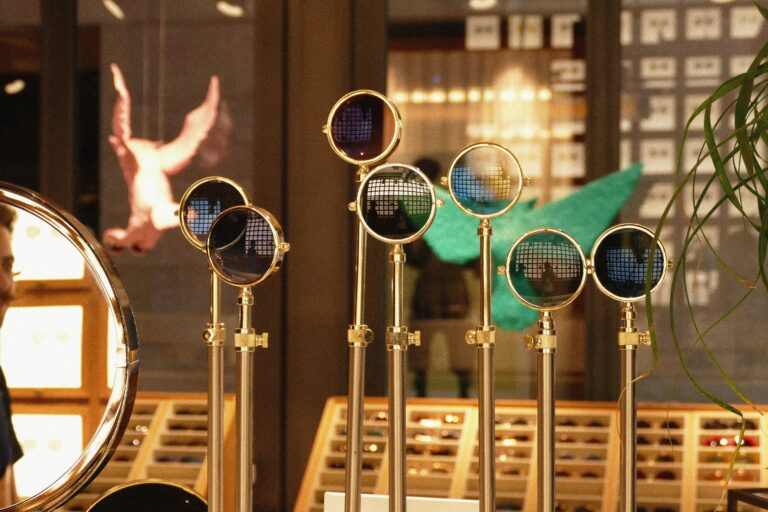Nearsighted vs Farsighted: Which One Do You Have?
Our eyes are tired and sick of long-time watching electric screams, such as computers and phones. If you have some vision problems like blurred vision, this blog can help you judge and improve your vision health. Don’t worry and believe Alamode. Nearsighted vs farsighted, you can be sure of which one you have now.
What is nearsighted
Nearsightedness, also known as myopia, is a common vision problem affecting millions worldwide. If you are nearsighted, you may struggle to see objects far away, but have no difficulty seeing things up close.
Definition and Causes
Nearsightedness is a refractive error that occurs when your eye is too long or your cornea is too curved. As a result, light entering the eye does not focus correctly on the retina, which is responsible for transmitting images to the brain. Instead, it focuses in front of the retina, causing distant objects to appear blurry. It can be hereditary, meaning it runs in families, but it can also develop as a result of other factors, such as excessive eye strain, environmental conditions, or medical conditions.
Symptoms and Diagnosis
The most typical sign of nearsightedness is the inability to see distant objects, such as whiteboards, road signs, or faces across a room. Eye strain, headaches, and squinting are additional signs. It is crucial to make an appointment for an eye exam with your optometrist or ophthalmologist if you experience any of these symptoms.
Your eye doctor will perform a number of tests during an eye exam to gauge how nearsighted you are. A visual acuity test, which involves reading letters on a chart from a particular distance, is the most typical examination.
Treatment Options
Nearsightedness can be treated with eyeglasses, contact lenses, and LASIK surgery, among other things. By resolving your eyes’ refractive error, eyeglasses and contact lenses enable light to focus properly on the retina. Contrarily, LASIK surgery reshapes your cornea to address the refractive error.
Tips for Managing Nearsightedness
- Wear your eyeglasses or contact lenses as prescribed by your eye doctor
- Take frequent breaks if you work on a computer or do other activities that require prolonged near vision
- Adjust your environment to reduce eye strain, such as using proper lighting or taking breaks from reading or screen time
- Discuss with your eye doctor whether LASIK surgery is a viable option for you

What is farsighted
Farsightedness, also known as hyperopia, is a common vision problem that affects people of all ages.
Definition and causes
Farsightedness is a refractive error of the eye where light entering the eye is focused behind the retina, instead of directly on it. This can occur due to an eye that is too short or a cornea that is not curved enough. Farsightedness can also be caused by aging or a family history of the condition.
Symptoms and diagnosis
The main sign of farsightedness is the inability to focus on close objects, which can result in eye strain, headaches, and blurred vision. Severe farsightedness can make it challenging to see distant objects clearly. Farsightedness can be identified through a thorough eye exam by an optometrist or ophthalmologist. A visual acuity test, a refraction test, and a retinal examination are frequently included in the examination.
Treatment options
The most common treatment for farsightedness is the use of corrective lenses such as glasses or contact lenses. Glasses for farsightedness have lenses that are thicker in the center and thinner at the edges, causing light to bend and focus correctly on the retina.
Contact lenses for farsightedness work by bending light as it enters the eye, focusing it correctly on the retina. Some people with farsightedness may also benefit from refractive surgery such as LASIK, which reshapes the cornea to correct the refractive error.
Tips for managing farsightedness:
- Wear corrective lenses as prescribed by an eye doctor.
- Take frequent breaks when doing near work to avoid eye strain.
- Make sure the lighting is adequate when reading or doing close work.
- Exercise regularly to maintain good overall health, which can help preserve eye health.
- Get regular eye exams to monitor any changes in vision and adjust your prescription as needed.

Summary
As common refractive errors, nearsighted and farsighted should be treated by wearing corrective lenses and surgery after comprehensive eye exams. Nearsighted vs farsighted, now you have known its differences and take action for our clear vision. However, you can be on alert if you don’t have these problems. All in all, you should and must protect your eye in the life of screens. Follow Alamode, more corrective lenses and eye protection methods will be found on the website of Alamode. Alamode is always here for your glasses option.





